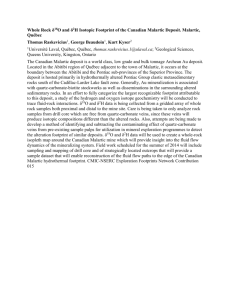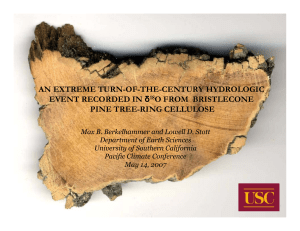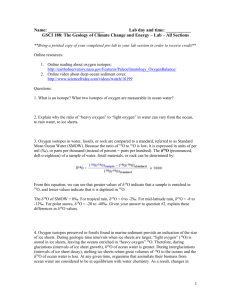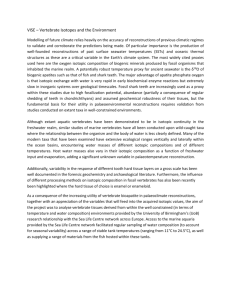Raskevicius
advertisement
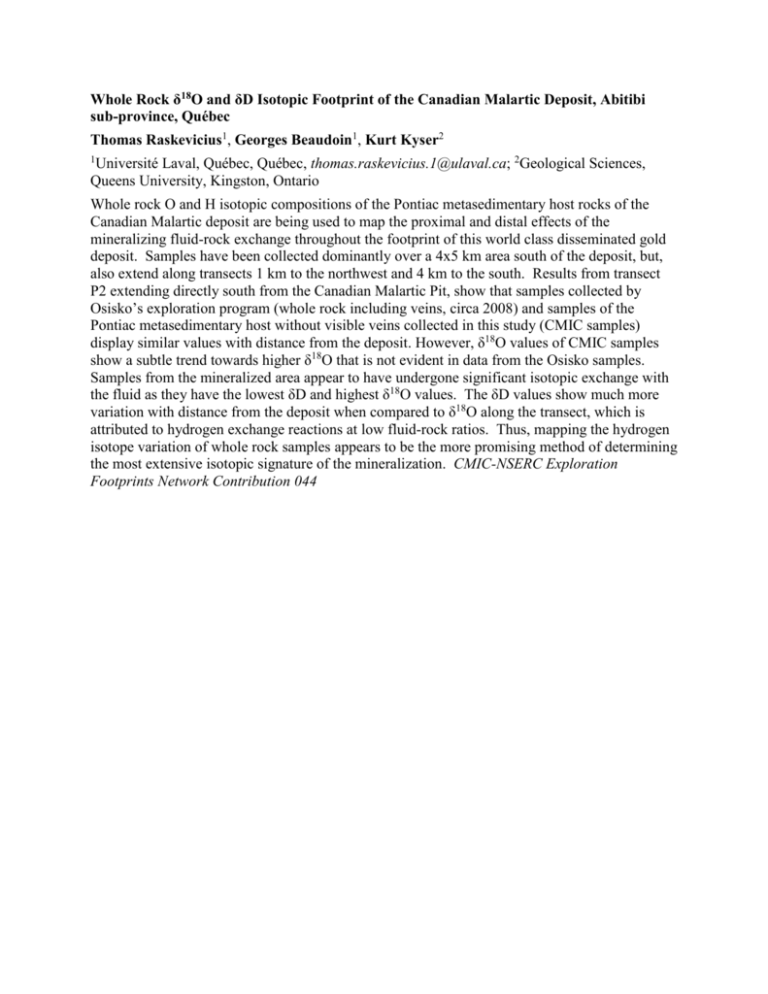
Whole Rock δ18O and δD Isotopic Footprint of the Canadian Malartic Deposit, Abitibi sub-province, Québec Thomas Raskevicius1, Georges Beaudoin1, Kurt Kyser2 1 Université Laval, Québec, Québec, thomas.raskevicius.1@ulaval.ca; 2Geological Sciences, Queens University, Kingston, Ontario Whole rock O and H isotopic compositions of the Pontiac metasedimentary host rocks of the Canadian Malartic deposit are being used to map the proximal and distal effects of the mineralizing fluid-rock exchange throughout the footprint of this world class disseminated gold deposit. Samples have been collected dominantly over a 4x5 km area south of the deposit, but, also extend along transects 1 km to the northwest and 4 km to the south. Results from transect P2 extending directly south from the Canadian Malartic Pit, show that samples collected by Osisko’s exploration program (whole rock including veins, circa 2008) and samples of the Pontiac metasedimentary host without visible veins collected in this study (CMIC samples) display similar values with distance from the deposit. However, δ18O values of CMIC samples show a subtle trend towards higher δ18O that is not evident in data from the Osisko samples. Samples from the mineralized area appear to have undergone significant isotopic exchange with the fluid as they have the lowest δD and highest δ18O values. The δD values show much more variation with distance from the deposit when compared to δ18O along the transect, which is attributed to hydrogen exchange reactions at low fluid-rock ratios. Thus, mapping the hydrogen isotope variation of whole rock samples appears to be the more promising method of determining the most extensive isotopic signature of the mineralization. CMIC-NSERC Exploration Footprints Network Contribution 044
